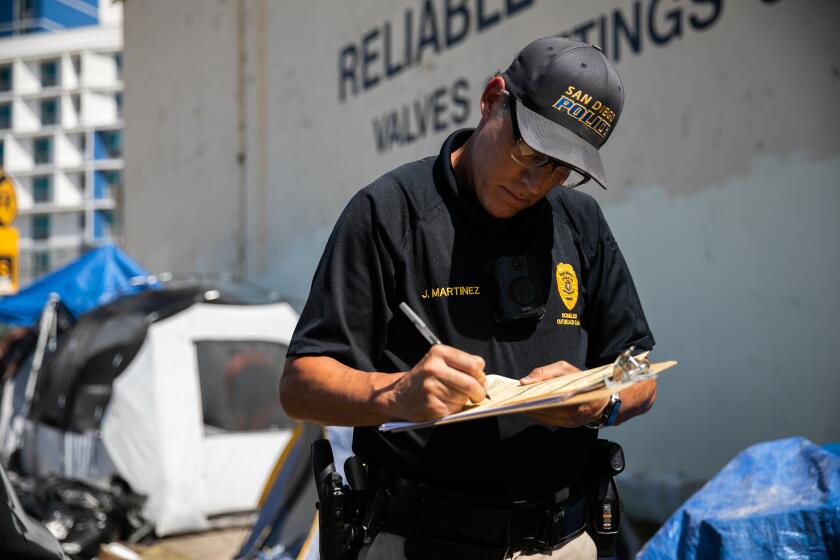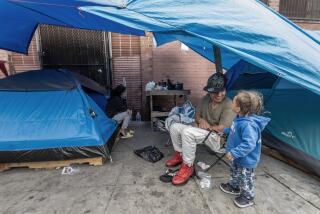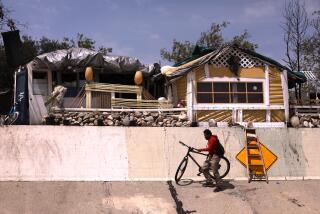
Yolanda Robinsâ dream was finally coming true.
After three decades living on skid row, punctuated by brief stays in hotel rooms and shelters, she was approved in January to move into an apartment where she could begin to rebuild her life with help from a federal housing subsidy program.
The Residences at Hotel Alexandria had a studio available immediately. The massive brick building began its life in 1906 as a luxury hotel and was repurposed in the mid-2000s as a mixed-income apartment building.
But the 50-year-old never moved in. A government agency tasked with helping people get into permanent housing bungled the opportunity, said Jahmean Magpantay, a leasing agent for the Residences at Hotel Alexandria.
The Housing Authority of the City of Los Angeles only had to approve Robinsâ paperwork and do a quick inspection of the apartment, Magpantay said.

But employees at the housing authority, known as HACLA, never responded to emails and calls, Magpantay and Robins said. As weeks of silence turned into months, Robins fretted she would lose her chance at a life with a roof over her head, a lock on the door and a private bathroom with running water.
âWe had space at the time, and we were just waiting on HACLA to respond. They never did, and no one came,â Magpantay said.
Carlos VanNatter, the agencyâs Section 8 director, said in an email that Robins called the agency Feb. 16 âand inquired about how and where to submitâ a form called a request for tenancy approval. HACLA answered her questions, he said.
Robins said the agency didnât provide assistance. She connected with a nonprofit called the Kingdom Warriors Foundation. A request for tenancy approval was filed on her behalf on June 4, VanNatter said.
Robinsâ request for tenancy approval âwas incomplete, so our staff person is working with her case manager at the nonprofit that referred her to get the inspection done,â he said.
In December, she received one of the 3,365 emergency housing vouchers awarded to the city of Los Angeles by the U.S. Department of Housing and Urban Development on July 1, 2021, to help get the most desperate people off the streets.
read more coverage
Los Angeles has had little success placing people in permanent housing with its emergency housing vouchers from HUD.
Instead, like the vast majority of the more than 3,000 people and families who have received the emergency vouchers in L.A., she remains in limbo. Although the housing authority has distributed all of its vouchers, it has had little success getting recipients into permanent housing.
As of Thursday, VanNatter said, only 196 emergency vouchers had been leased out in the city of Los Angeles â meaning that people have used them to move into homes whose landlords have received initial payments from the housing authority.
Thatâs about 5.8% of the vouchers the city received from HUD more than a year ago.
Only three emergency housing vouchers were leased out in the city of L.A. between May 9 and Thursday.
Other California cities have had far higher rates of success housing people whoâve been issued the vouchers. Santa Barbaraâs housing authority, for example, was awarded 89 emergency vouchers in July 2021. HUD granted the city 25 more because by February the entire first allotment had been used to put people in homes.
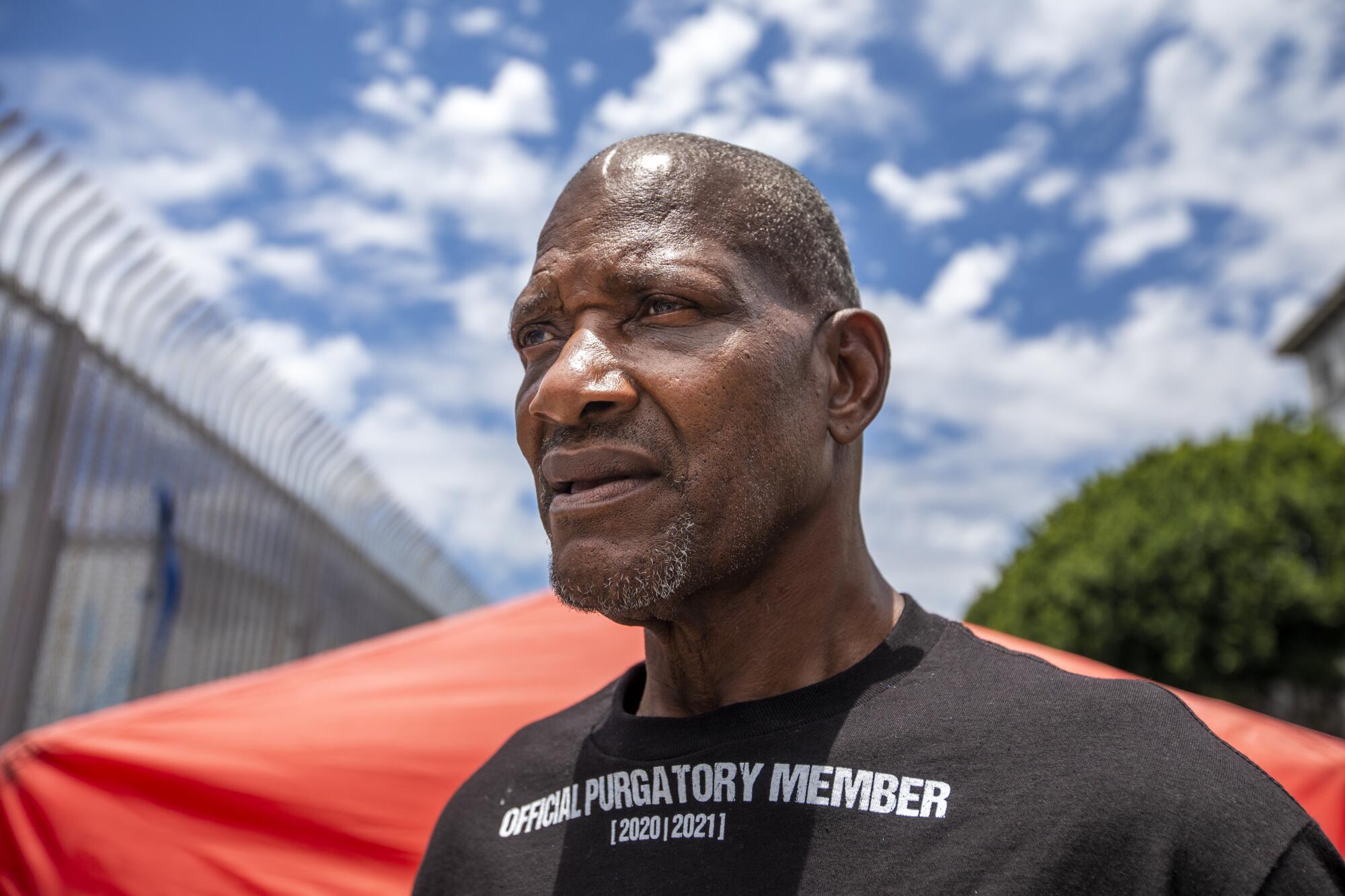
Magpantay said HACLA also has ignored her communications about an unhoused man with an emergency voucher who was approved for an apartment this year: âWe havenât received any response, and he applied in March.â
Robinsâ voucher expired in April, according to a copy of the voucher Magpantay provided to The Times. On Thursday, VanNatter said her voucher expires Sept. 13.
On Friday, three days after The Times first contacted HACLA to ask about the status of Robinsâ housing application, VanNatter said in an email that the agency had âresolved the issues with Yolanda Robinsâ RFTA and her unit is scheduled for inspectionâ Thursday.
Today, she still lives in a tent near a fried-fish restaurant on skid rowâs eastern fringe, where she washes up in a fire hydrant and says she has been repeatedly threatened and attacked by men.
âIâve been out here since I was 19 years old. Iâve never had my own home,â she said. âIâm glad my life didnât depend on this [apartment] because I wouldâve been dead.â
::
When HUD awarded 70,000 emergency housing vouchers to housing authorities across the U.S. in July 2021, the Delta wave of the COVID-19 pandemic had just begun. The economic effects of coronavirus-related restrictions were weighing on Americans, and local governments were struggling to meet the widespread need.
The national effort is part of the American Rescue Plan Act signed by President Biden in March 2021. Itâs an attempt to help the neediest in society â people and families who are homeless, at risk of becoming homeless, recently homeless or fleeing intimate violence, sexual assault, stalking, or human trafficking. The housing subsidies are part of the federal Section 8 program and are based on recipientsâ income.
In California, HUD issued the most emergency vouchers to the L.A. city housing authority and the second-most to L.A. County.
âThere are a lot of people on the street looking for housing with vouchers in hand.â
— Doug Guthrie, Housing Authority of the City of Los Angeles

The emergency housing vouchers and associated funding L.A. city received from the federal agency are worth nearly $80 million.
Doug Guthrie, the city housing authorityâs president, blames HACLAâs low success rate housing people via vouchers on a range of factors, from L.A.âs âchallengingâ rental market to staffing issues within his agency.
âThere are a lot of people on the street looking for housing with vouchers in hand,â he said. âI think we got off to a slow start.â
VanNatter said HACLA is working through hundreds of outstanding requests for tenancy approval and that the agency expects more than 100 additional emergency housing vouchers to be leased out âsometime soon.â
At the same time, 641 of the 1,964 vouchers the Los Angeles County Development Authority received had been leased out as of Wednesday, the agency said, for a rate of 32.6%. Like the city of Los Angeles, the development authority has issued all of its vouchers to people or families.
Statewide, about 28.6% of the 17,174 vouchers that HUD awarded in California had been leased out by Thursday. Thatâs lower than the national rate: To date, more that 38% of the 70,000 vouchers awarded nationwide have been leased out, according to HUD data.
Tracie Mann, the development authorityâs chief of programs, said the countyâs low rental vacancy rate has slowed efforts to house people with vouchers.
âIt ultimately boils down to available affordable units,â she said. âIf we had enough units to fill our available EHV [voucher] allocation, Iâm sure weâd be half-leased or more than half-leased.â
Felicia Flowers said that after her family became homeless last summer, she applied for an emergency voucher in August and was approved by December.
Over the intervening months, she said, she experienced âvery low times of depression and feeling like giving up.â
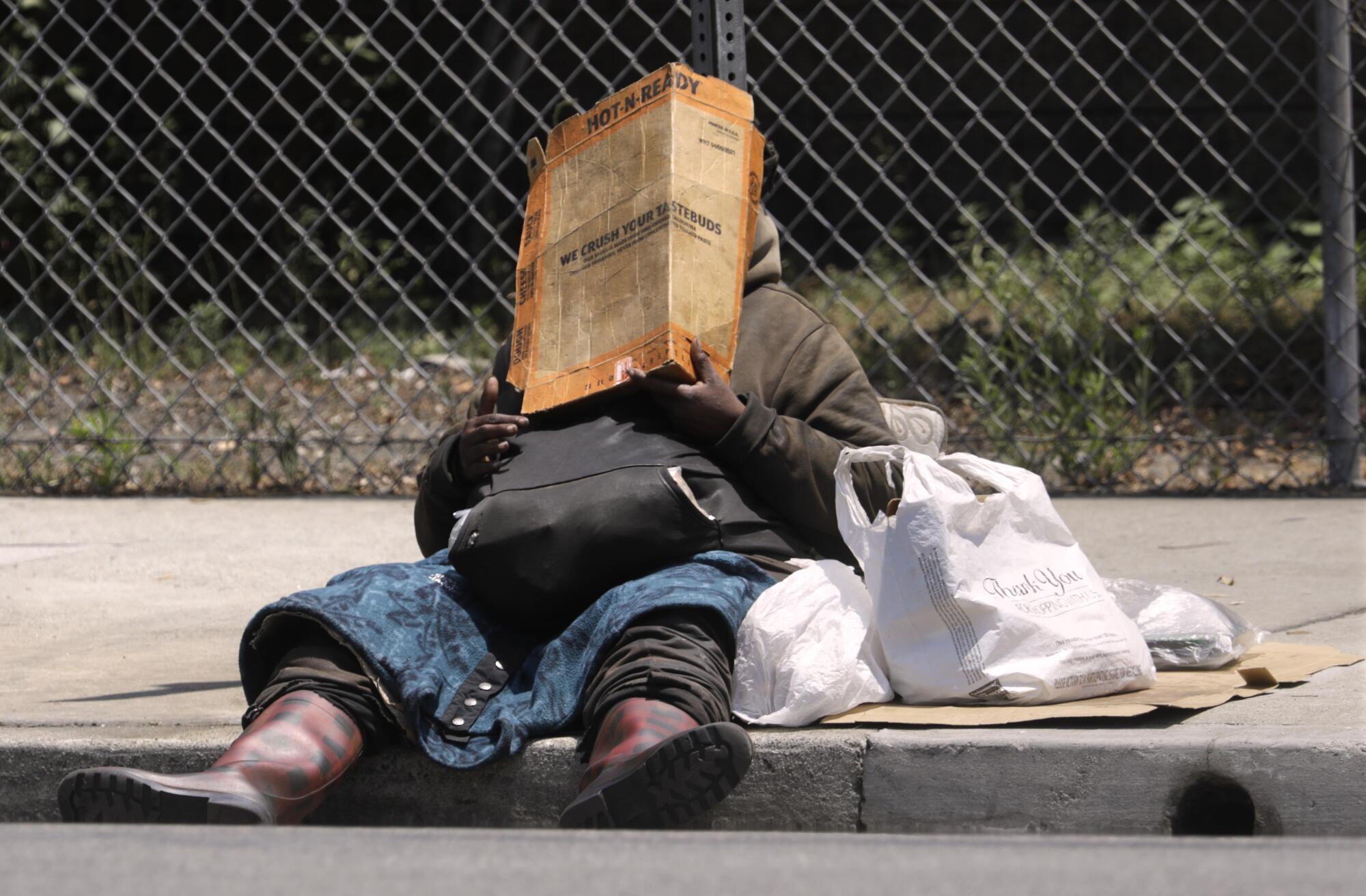
But on Jan. 18, with the county housing authorityâs help, she used her emergency voucher to move into a three-bedroom house in San Fernando.
âThe wait to me is ridiculous, but I understand theyâre dealing with hundreds of families,â she said. âThe [development authority] workers I was partnered with were willing to go the extra mile to help me out.â
In Los Angeles, Guthrie said last month that he believed the city housing authority had âa little over a year to get people into housing.â HUD has set a September 2023 deadline to reassign previously issued emergency housing vouchers to new recipients.
The city might have less time than that. A May 2021 HUD guidance states that if a housing authority âfails to lease its authorized EHVs within a reasonable period of time, HUD may revoke and redistribute any unleased vouchersâ to better-performing housing authorities.
A spokesperson for the federal agency said via email that â[w]e donât have a date and we donât have any information about the revocation/reallocation at this time.â
But an FAQ sheet HUD updated in February says that â[i]n the summer of 2022, HUD will issue a notice to provide additional details on the criteria applied for revocation and reallocation of EHVs.â
In the meantime, more than 60,000 people in Los Angeles County remain homeless.
::
Being unhoused in Los Angeles can be deadly. Last year, an average of about five homeless people died per day in L.A. County, up from fewer than 3.5 daily deaths just three years ago and about 1.7 deaths per day in 2014.
âPeople say, âJoe, youâre an angry old man.â And I say, âLook at where Iâm at. Youâd be angry, too.ââ
— Jose Luis Camargo, homeless
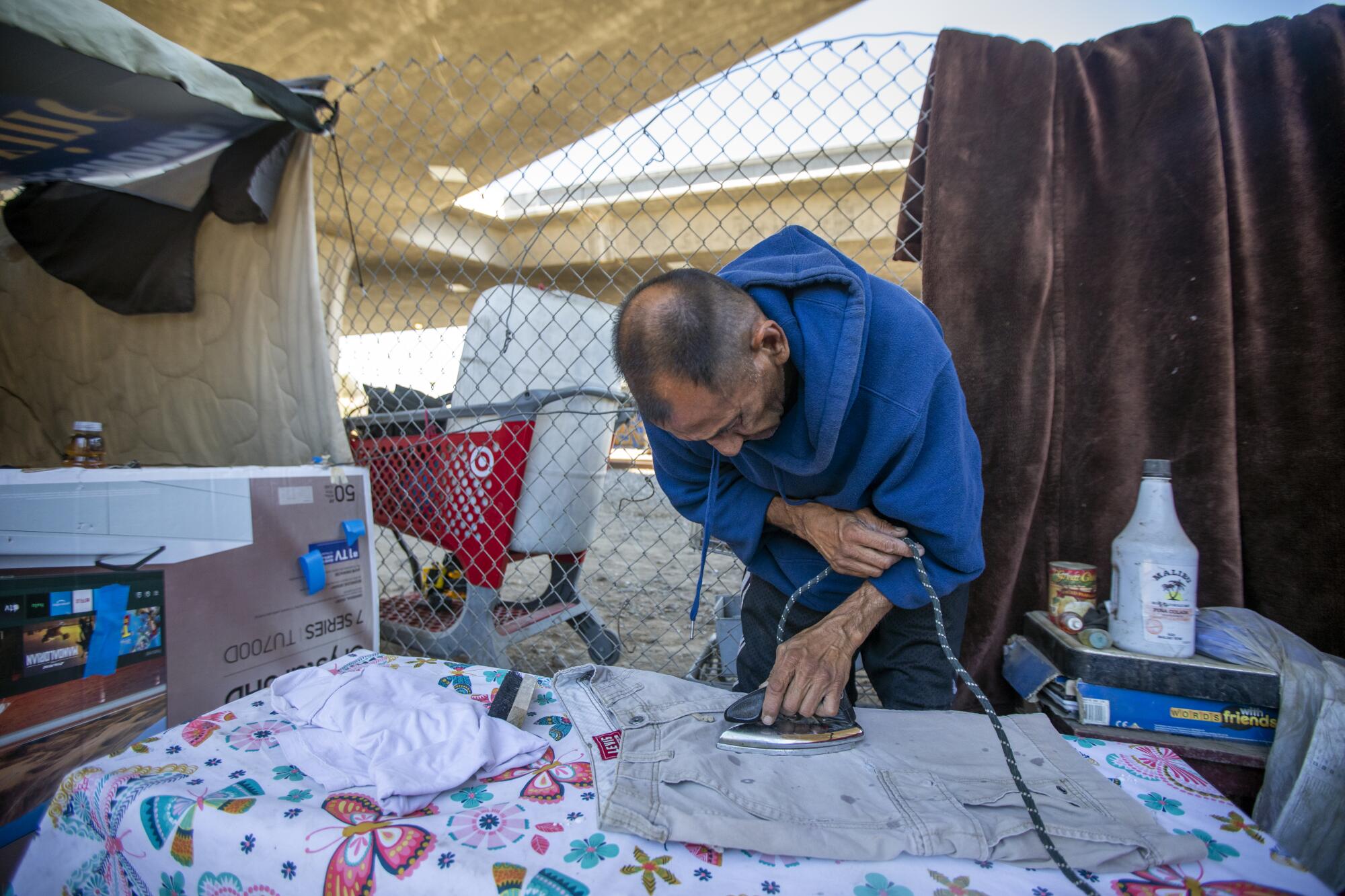
Jose Luis Camargo wants to avoid becoming a statistic.
The 55-year-old, who is disabled, has severe abdominal pain and an untreated hernia. Heâs grown emaciated during the roughly three months heâs lived under an elevated ramp linking the 110 Freeway to the 105 in Harbor Gateway North.
Before he lived in this small encampment of makeshift dwellings along active railroad tracks, Camargo spent about nine months in a shantytown under a stretch of the 105.
Today, he sleeps on a blanket-lined cot inside a small, boxy structure he built out of cardboard, curtain rods, various fabrics and a chain-link fence that doubles as the bones of the back wall. A sheet of sheer mesh draped over an oversized Maxine Waters campaign sign serves as his roof.
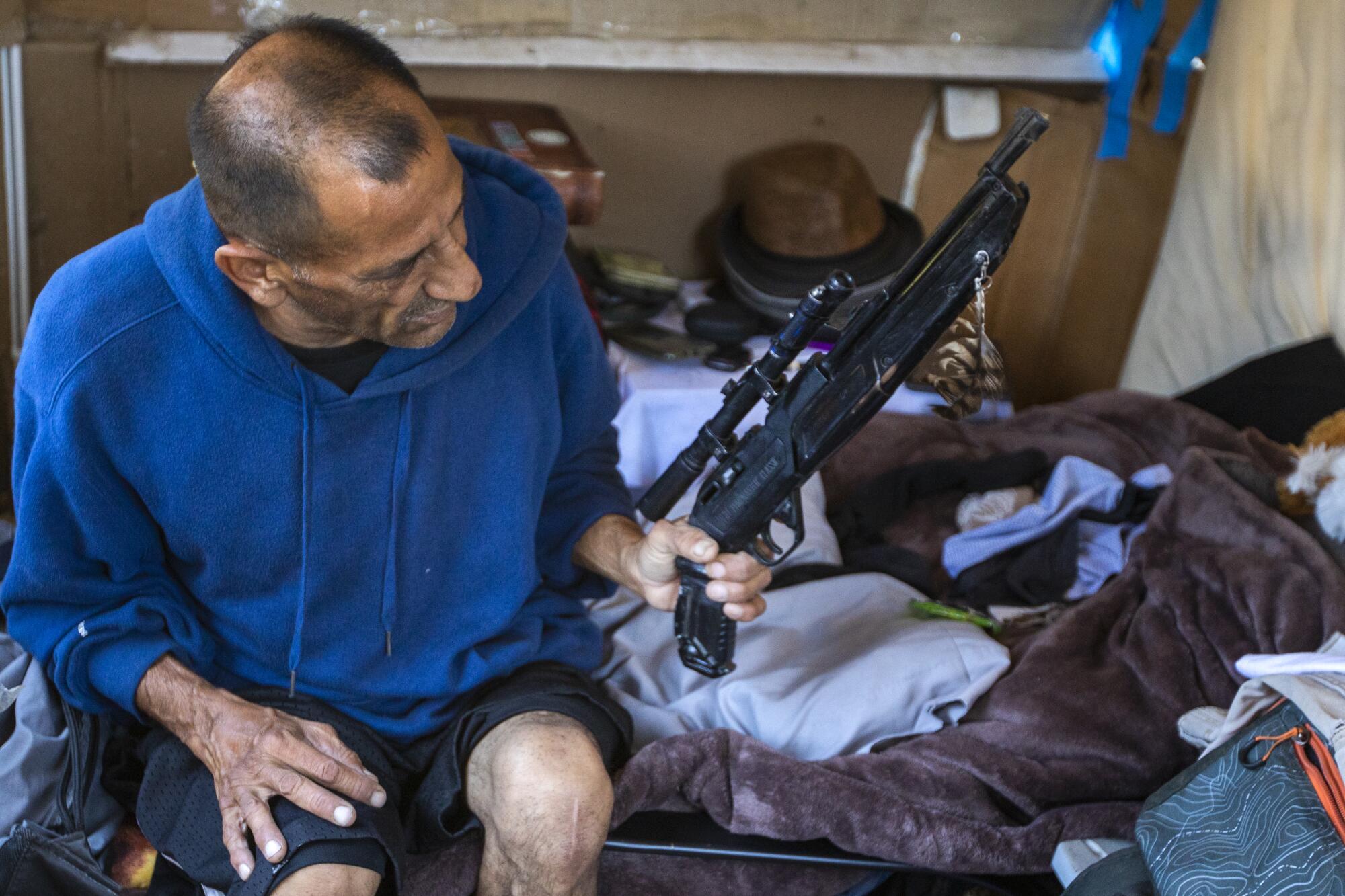
Tucked away next to his cot, Camargo keeps a pump-action air rifle to fend off rats and two machetes for assailants.
To wash his clothes and bathe, he fills a basin with water from a nearby fire hydrant he opens with pliers. After drying his shirts and shorts on a jerry-built clothesline, he presses them with starch and a small iron.
âWith all my medical problems, I canât live like this. I had to go to the hospital last month three times. They told me first it was my hernia. Then they told me it was my pancreas,â he said. âIt hurts so bad Iâm rolling around on the ground, even if itâs dirt.â
Camargo, who trims his dark hair and rides a gleaming blue bicycle he built from spare and discarded parts, has been unable to work since he injured his leg in a car crash about eight years ago. Before that, the father of six worked a succession of jobs, including one in a greenhouse and his final gig, at a flour manufacturer.
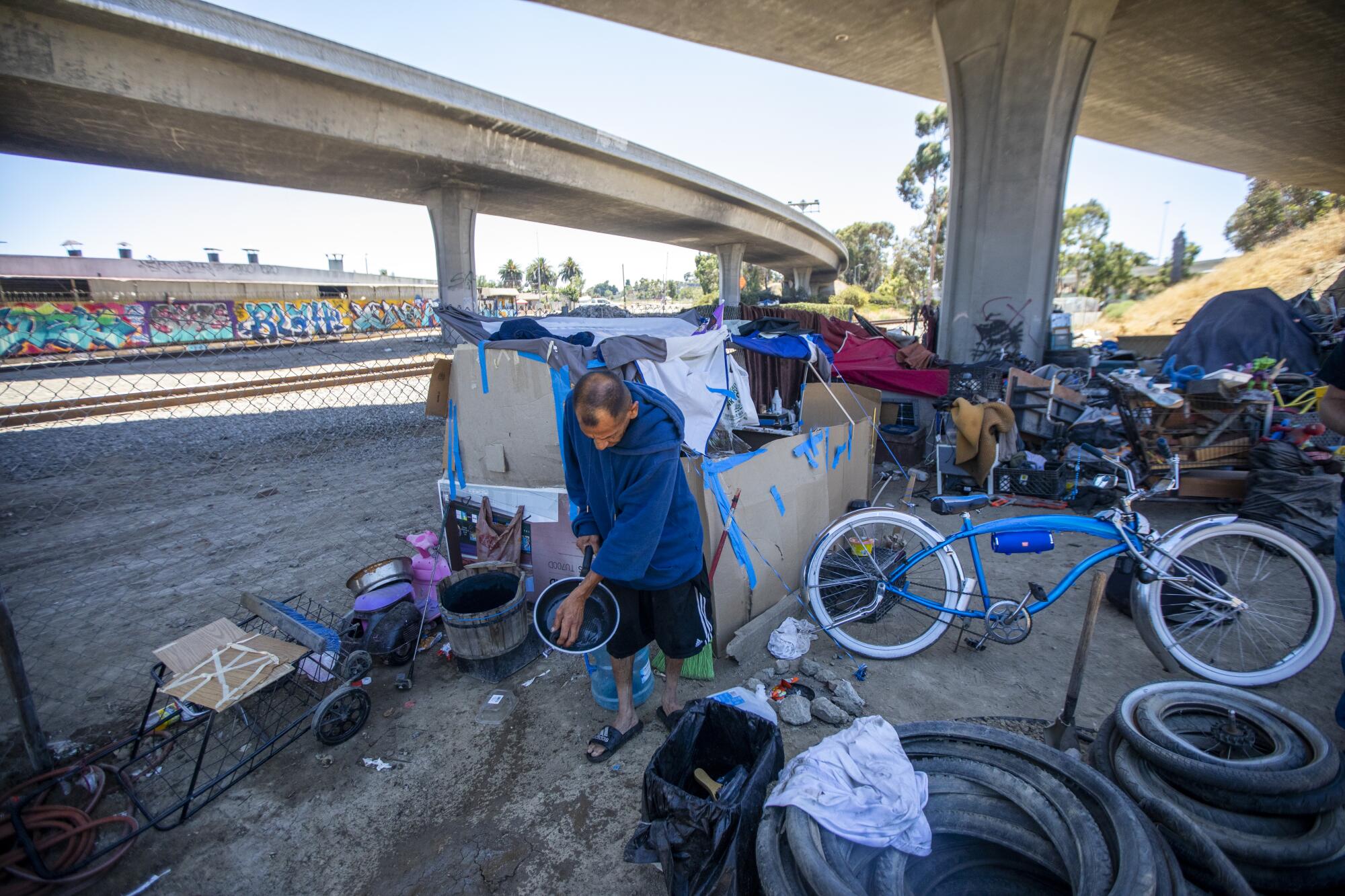
âI always worked, but tragedies happen and you donât see it coming,â he said. Camargoâs son Samuel Guzman was killed in 2014. He was 20. âPeople say, âJoe, youâre an angry old man.â And I say, âLook at where Iâm at. Youâd be angry, too.ââ
Camargo lived with family until two years ago, when his sister sold the house they grew up in and moved to Arizona. He has been homeless since.
Like several other unhoused people in L.A. interviewed by The Times in recent weeks, Camargo said he applied for an emergency housing voucher months ago. All said they have yet to be updated on their status.
Camargo said a Los Angeles Homeless Services Authority employee came to his previous encampment in November and helped him fill out an application for an emergency voucher.
âThey came and signed me up,â Camargo said. âThey had me fill out a paper and said theyâd be back in a week, and I never saw them again.â
Ahmad Chapman, a LAHSA spokesman, said via email that the agency âworks with nonprofit case workers to help people experiencing homelessness apply for EHVs. Once LAHSA receives and validates the application, we send it to a public housing authority.â Chapman declined to comment on Camargoâs claims.
VanNatter disputed some of Camargoâs statements. As of Thursday, VanNatter said, the housing authority had not received a voucher application from him or Lee Hatten, a homeless man living on skid row who said HACLA helped him apply for a voucher several months ago, then did not respond to his repeated inquiries about its status.
âIâm not sure what happened with these two folks,â VanNatter said. âWe havenât received an application for either of those two people, and neither has LAHSA.â
While more than 3,000 vouchers have yet to be leased out in L.A., Camargo continues to wait, cooking his meals on a compact camping stove as cars roar by overhead and the deadly summer heat rises.
::
Drive two hours northwest from L.A. to Santa Barbara and youâll find an emergency housing voucher program that works.
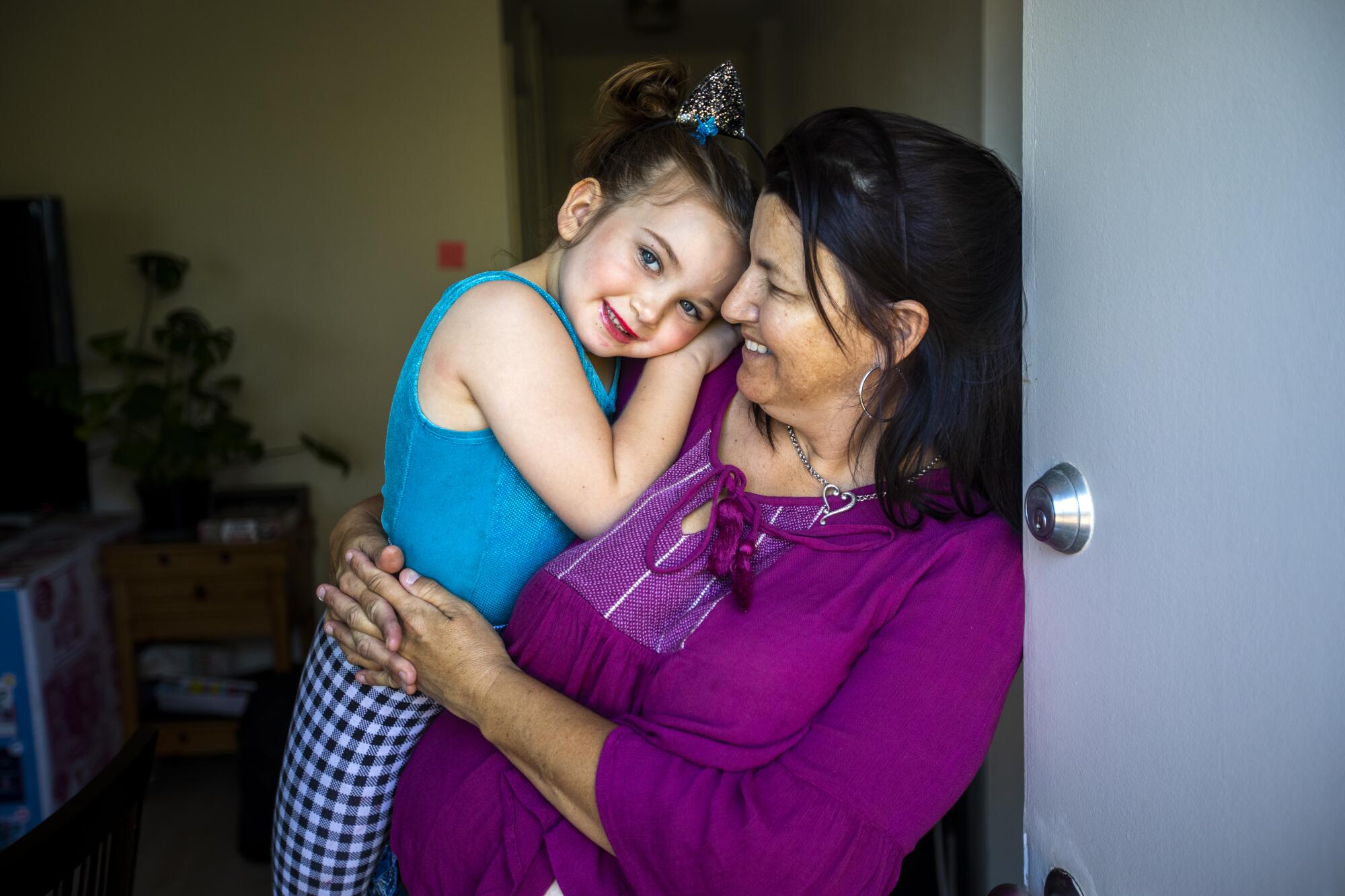

When Michelle Gerardi and her three children were given 10 daysâ notice to move out of their home in Ojai, they had nowhere to go. She spent more than a week calling transitional living facilities in Ventura County, but none could take them. The best hope she had was one a friend had recommended in Santa Barbara.
Gerardi loaded up her kids and all the belongings that would fit in her SUV and headed out. It was May 30, 2021.
âI was basically living on a prayer,â she said. âI really had no clue when I got up here what was going to happen.â
After a month in transitional housing â a bare room with metal bunk beds â Gerardi applied for an emergency voucher.
With extensive assistance from the Housing Authority of the City of Santa Barbara, she was issued a voucher. By the end of September, she had signed a lease on an apartment near the Santa Barbara Zoo in a tan stucco building with a courtyard.
The housing authority assigned her a case manager, connected her with local aid organizations and helped her kids get into enrichment programs.
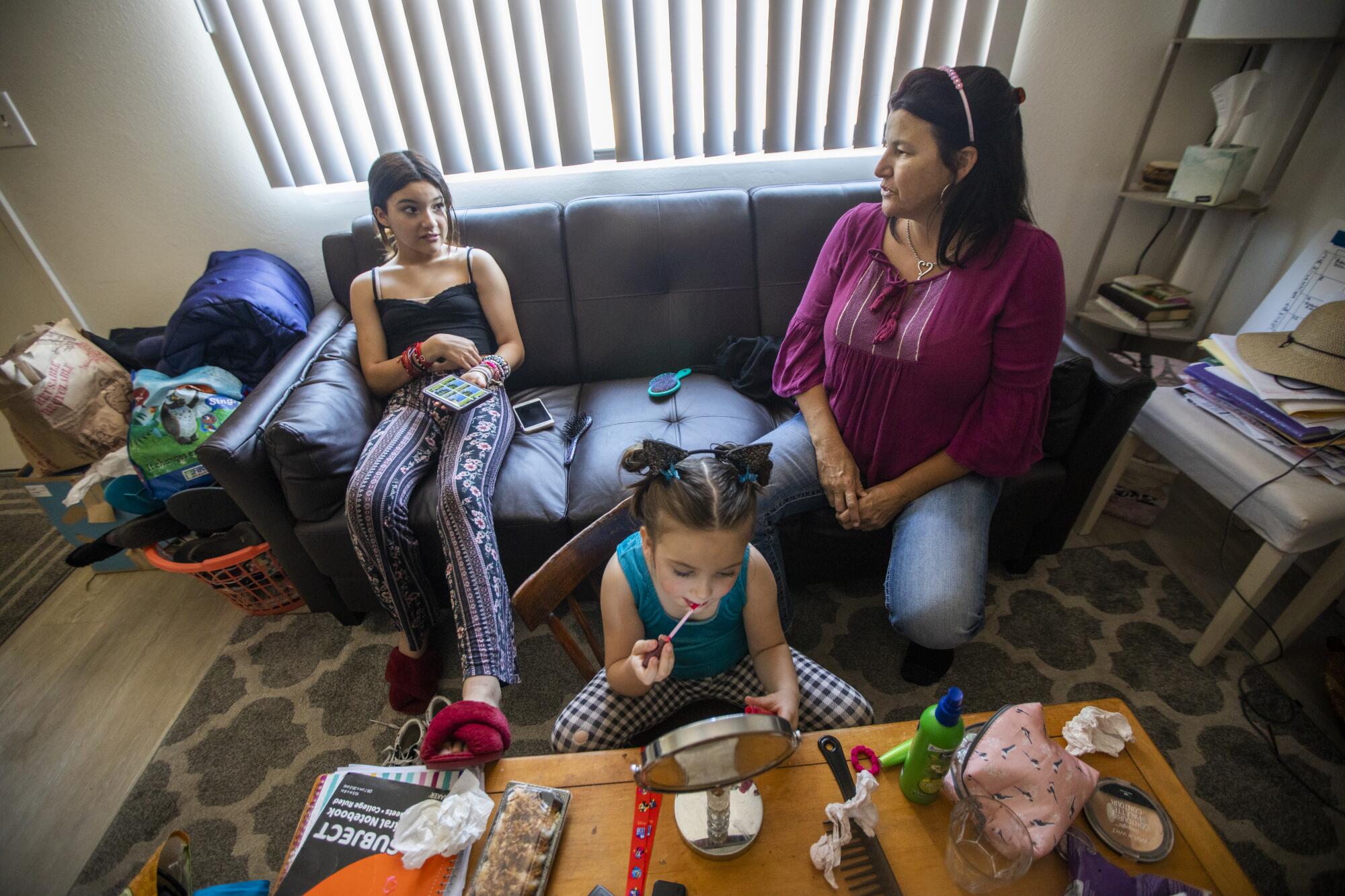
âItâs so amazing, the support that they give you,â Gerardi said. âHere, you actually have light at the end of the tunnel ... Youâre not just stuck in this hamster wheel of social services.â
Santa Barbara is home to about 90,000 people, less than 2.3% of the nearly 4 million who live in the city of L.A. So Santa Barbara received just 89 vouchers in July 2021. Thatâs slightly fewer vouchers per capita than L.A. received.
Rob Fredericks, executive director of the Santa Barbara housing authority, said he âknew it was going to be a heavy liftâ to get 89 vouchers issued and leased out quickly. But he said the authority made it a priority, announcing generous financial incentives for landlords, working with partner organizations, and rolling out a media blitz to raise awareness of the program.
The authority helps emergency voucher recipients find available rentals and communicate with landlords. The authority provides additional support after move-in, including career development and educational assistance.
Within eight months of the programâs launch, Santa Barbara had leased out all of its vouchers. In April, HUD rewarded the the housing authority for its success by granting it another 25 vouchers â resources that other housing authorities had voluntarily returned to HUD.
Across the country, the effort to get people housed via the vouchers has been hampered by the fact that many housing authorities âdonât see helping solve the homeless issue as their problem,â Fredericks said.
âIn Santa Barbara â which is the American Riviera with an extremely low vacancy rate of about half a percent â if we can lease up here our EHV vouchers, I figure you should be able to lease up anywhere else in the country,â he said.
More to Read
Sign up for Essential California
The most important California stories and recommendations in your inbox every morning.
You may occasionally receive promotional content from the Los Angeles Times.
